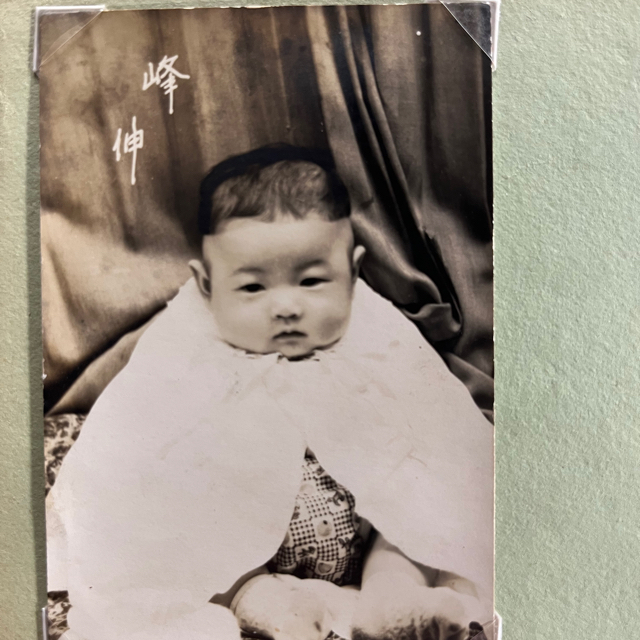
Organization that runs Bronx Zoo apologizes for putting an African man on display in its Monkey House
野生生物保護協会(WCS)は水曜日、ブロンクス動物園でのオタ・ベンガの投獄と展示について正式に謝罪する声明を発表した。

deeplさんが翻訳
"私たちは、多くの人々や世代がこれらの行為によって、あるいはこれまで公に非難し、糾弾することを怠ってきたことによって傷ついたことを深く後悔しています」と、WCS会長兼CEOのクリスティアン・サンパーは書いています。
"私たちは、あからさまで体系的な人種差別が根強く存在していることを認識しており、私たちの機関はそれに立ち向かうために、より大きな役割を果たさなければならない」と書いています。
声明によると、ベンガは現在のコンゴ民主共和国のムブティ族出身で、1906年9月8日の週に数日間、動物園のモンキーハウスに展示されていた。 地元の黒人牧師たちが怒りをあらわにして自由を要求したため、彼は釈放された。
"Spectacle: The Astonishing Life of Ota Benga "の著者であるパメラ・ニューカークによると、動物園に収監されている間、ベンガは非人道的な環境に置かれていたという。 ニューカークは、ベンガさんの投獄についてCNNのオピニオン記事も書いており、オランウータンと一緒に鉄製の檻の中に閉じ込められている間、ベンガさんは一度に何百人もの人に直面することが多かったと述べています。
外に出られる時間は短い。 週間後、ベンガは抵抗し始め、係員を脅すようになり、それが彼の解放に貢献した、とニューカークは彼女の論文に書いています。
最終的に解放されたとき、ジェームズ・ゴードン牧師は、ブルックリンのウィークスビルで彼が運営していた孤児院でベンガを引き取った、とWCSは書いている。 ベンガは「家に帰ることができなかった」が、10年後に自殺で亡くなったという。
同団体はまた、創設者のマディソン・グラントとヘンリー・フェアフィールド・オズボーン・シニアの2人が進めた「優生学に基づく似非科学的な人種差別、著作、哲学」を糾弾した。
グラントの著書「The Passing of the Great Race」は、ニュルンベルク裁判の弁護に使われました。 声明によると、グラントとオズボーンは、1926年にアメリカ優生学協会の設立にも協力したという。
透明性を高める使命の一環として、WCSはベンガに関連するすべての記録やアーカイブを公開しています。 同組織は、ベンガの歴史を "アクセス可能で透明性のあるもの "にするために、さらなるプロジェクトを展開していくことを約束しているという。
また同組織は、現在の組織が2019年に実施されるダイバーシティ、公平性、インクルージョン計画に向けて、リーダーシップと協力して取り組むために、ダイバーシティ担当者を雇用していることにも言及している。
"今日、私は自分自身と同僚に、より良い行動をすることに挑戦します "と、Samperは書いています。"不正がいつ、どこで起こっても、決して目をそむけないように。"

ケーリー グラント 1958
Grant was a close friend of several U.S. presidents, including Theodore Roosevelt and Herbert Hoover, and also was an avid conservationist. He is credited with saving many natural species from extinction, and co-founded the Save the Redwoods League with Frederick Russell Burnham, John C. Merriam, and Henry Fairfield Osborn in 1918. He is also credited with helping develop the first deer hunting laws in New York state, legislation which spread to other states as well over time. [photograph: Ota Benga was exhibited in the Monkey House of the Bronx Zoo, New York in 1906.] He was also the creator of wildlife management; helped to found the Bronx Zoo, build the Bronx River Parkway, save the American bison as an organizer of the American Bison Society, and helped to create Glacier National Park and Denali National Park. In 1906, as Secretary of the New York Zoological Society, he lobbied to put Ota Benga, a Congolese man from the Mbuti people (a tribe of "pygmies"), on display alongside apes at the Bronx Zoo.[5] Throughout the 1920s and 1930s, he served on the boards of many eugenic and philanthropic societies, including the board of trustees at the American Museum of Natural History, as director of the American Eugenics Society, vice president of the Immigration Restriction League, a founding member of the Galton Society, and one of the eight members of the International Committee of Eugenics. He was awarded the gold medal of the Society of Arts and Sciences in 1929. In 1931, the world's largest tree (in Dyerville, California) was dedicated to Grant, Merriam, and Osborn by the California State Board of Parks in recognition for their environmental efforts. A subspecies of caribou was named after Grant as well (Rangifer tarandus granti, also known as Grant's Caribou). He was a member of the Boone and Crockett Club (a big game hunting organization) since 1893, where he was friends with president Theodore Roosevelt. He was head of the New York Zoological Society from 1925 until his death. Historian Jonathan Spiro has argued that Grant's interests in conservationism and eugenics were not unrelated: both are hallmarks of the early 20th-century Progressive movement, and both assume the need for various types of stewardship over their charges.[6] In Grant's mind, natural resources needed to be conserved for the Nordic Race, to the exclusion of other races. Grant viewed the Nordic race lovingly as he did any of his endangered species, and considered the modern industrial society as infringing just as much on its existence as it did on the redwoods. Like many eugenicists, Grant saw modern civilization as a violation of "survival of the fittest", whether it manifested itself in the over-logging of the forests, or the survival of the poor via welfare or charity.[In this section, verification is needed]
マディソン・グラント
WCS創設者
グラントはセオドア・ルーズベルトやハーバート・フーバーを含む数人のアメリカ大統領と親交があり、熱心な自然保護活動家でもあった。 多くの自然種を絶滅の危機から救ったことで知られ、1918年にはフレデリック・ラッセル・バーナム、ジョン・C・メリアム、ヘンリー・フェアフィールド・オズボーンらと「セーブ・ザ・レッドウッズ・リーグ」を共同設立した。 また、ニューヨーク州における最初の鹿狩猟法の制定に貢献したことでも知られ、この法律は時を経て他の州にも広まった。 写真 オタベンガは1906年、ニューヨークのブロンクス動物園のモンキーハウスに展示された]。 ブロンクス動物園の設立、ブロンクス・リバー・パークウェイの建設、アメリカバイソン・ソサエティのオーガナイザーとしてのアメリカバイソンの保護、グレイシャー国立公園とデナリ国立公園の創設に貢献するなど、野生動物管理の生みの親でもある。 1906年、ニューヨーク動物学協会の長官として、ブロンクス動物園にコンゴのムブティ族(「ピグミー」の一種)のオタ・ベンガを類人猿とともに展示するよう働きかけた。[5] 1920年代から1930年代にかけては、アメリカ自然史博物館の理事、アメリカ優生学協会理事、移民制限連盟副会長、ガルトン協会創立メンバー、国際優生学委員会8名の1人など、多くの優生学協会や慈善団体の役員を務めた。 1929年、芸術科学協会の金メダルを受賞。 1931年、カリフォルニア州公園委員会により、彼らの環境保護への努力が認められ、世界最大の木(カリフォルニア州ダイアビル)がグラント、メリアム、オズボーンに捧げられた。 カリブーの亜種もグラントにちなんで命名された(Rangifer tarandus granti、別名Grant's Caribou)。 彼は1893年からブーン・アンド・クロケット・クラブ(大物狩猟団体)のメンバーであり、セオドア・ルーズベルト大統領と親交があった。 彼は1925年から亡くなるまでニューヨーク動物学協会の会長を務めた。 歴史家のジョナサン・スピロは、グラントの自然保護主義と優生学への関心は無関係ではないと論じている。どちらも20世紀初頭の進歩主義運動の特徴であり、両者ともその対象に対するさまざまな種類のスチュワードシップの必要性を前提としている[6]。グラントの考えでは、自然資源は他の人種を排除して北欧人種のために保全される必要があった。 グラントは、絶滅危惧種と同じようにノルディック種を愛おしく思い、現代の産業社会がレッドウッドと同じようにノルディック種の存在を侵害していると考えた。 多くの優生学者がそうであるように、グラントも現代文明を「適者生存」の侵害とみなし、それが森林の過剰伐採であれ、福祉や慈善事業による貧困層の生存であれ、「適者生存」の侵害とみなした。

























